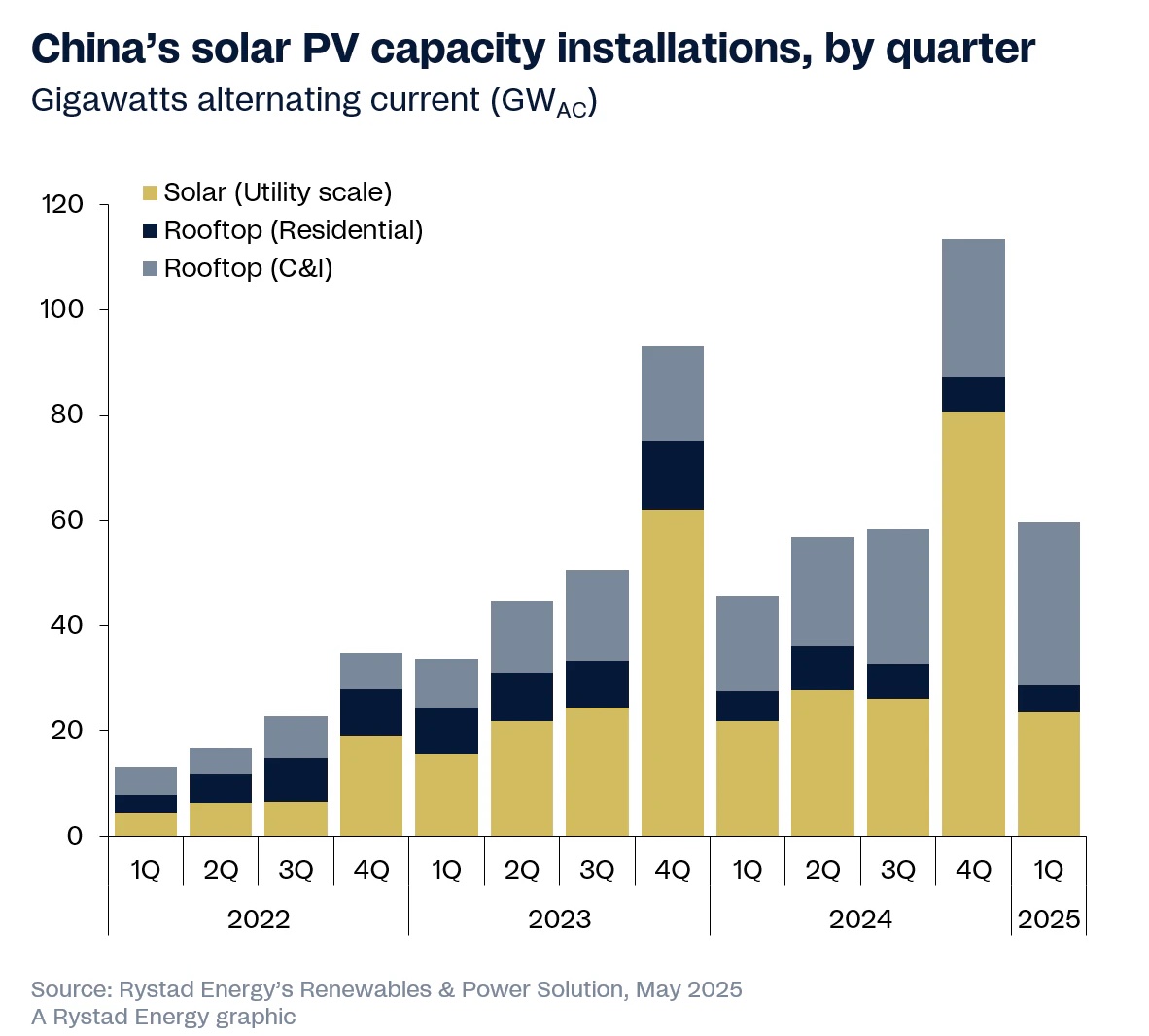
China’s solar power sets historic Q1 record, led by NEA reforms and rooftop boom
Solar power in China reached a new high in the first quarter of 2025, with 60 GW of new capacity installed. Of that, 36 GW came from rooftop installations, marking the largest quarterly share ever recorded. This growth was driven by the combined effect of new guidelines from the National Energy Administration (NEA), in force since May, which promote self-consumption and aim to reduce grid congestion.
New NEA rules accelerate China’s energy transition
The NEA directive supports China’s national climate goals, including peaking emissions by 2030 and achieving carbon neutrality by 2060. The policy encourages a more market-driven and sustainable approach. Although guaranteed grid access has been removed for many commercial and industrial (C&I) projects, distributed solar remains a viable path to reduce environmental impact. Analysts expect rooftop solar installations to continue rising in the second quarter of the year.
According to forecasts from Rystad Energy, total new solar capacity for 2025 is expected to reach 130 GW, including 92 GW from C&I rooftop projects and 38 GW from residential systems.
Regional disparities in solar development across China
National regulations are being applied unevenly across provinces. While regions like Jiangsu and Guangdong maintain flexible approaches, northern areas such as Inner Mongolia and Jilin have introduced high self-consumption thresholds, up to 90%. These constraints have slowed the spread of C&I installations in more regulated zones, while encouraging more dynamic policies elsewhere.
Energy market shifts and new trading models
In provinces like Shandong and Hubei, all surplus energy from C&I systems must be sold through energy markets. This requirement aligns with the broader goal of integrating solar power in China into market-based pricing mechanisms. Meanwhile, tools such as green certificates and carbon trading are emerging, offering new revenue opportunities for producers.
solar power in China linked to CO₂ emissions drop
According to analysis by Carbon Brief, the rapid expansion of solar power in China and other renewables has already shown results: CO₂ emissions fell by 1.6% in Q1 2025 compared to the previous year. It’s the first time this decline is not tied to weak demand but instead to a genuine replacement of fossil fuels with clean energy. “New solar, wind, and nuclear installations produced more electricity than coal, even with rising demand,” said Lauri Myllyvirta, analyst at the Centre for Research on Energy and Clean Air.